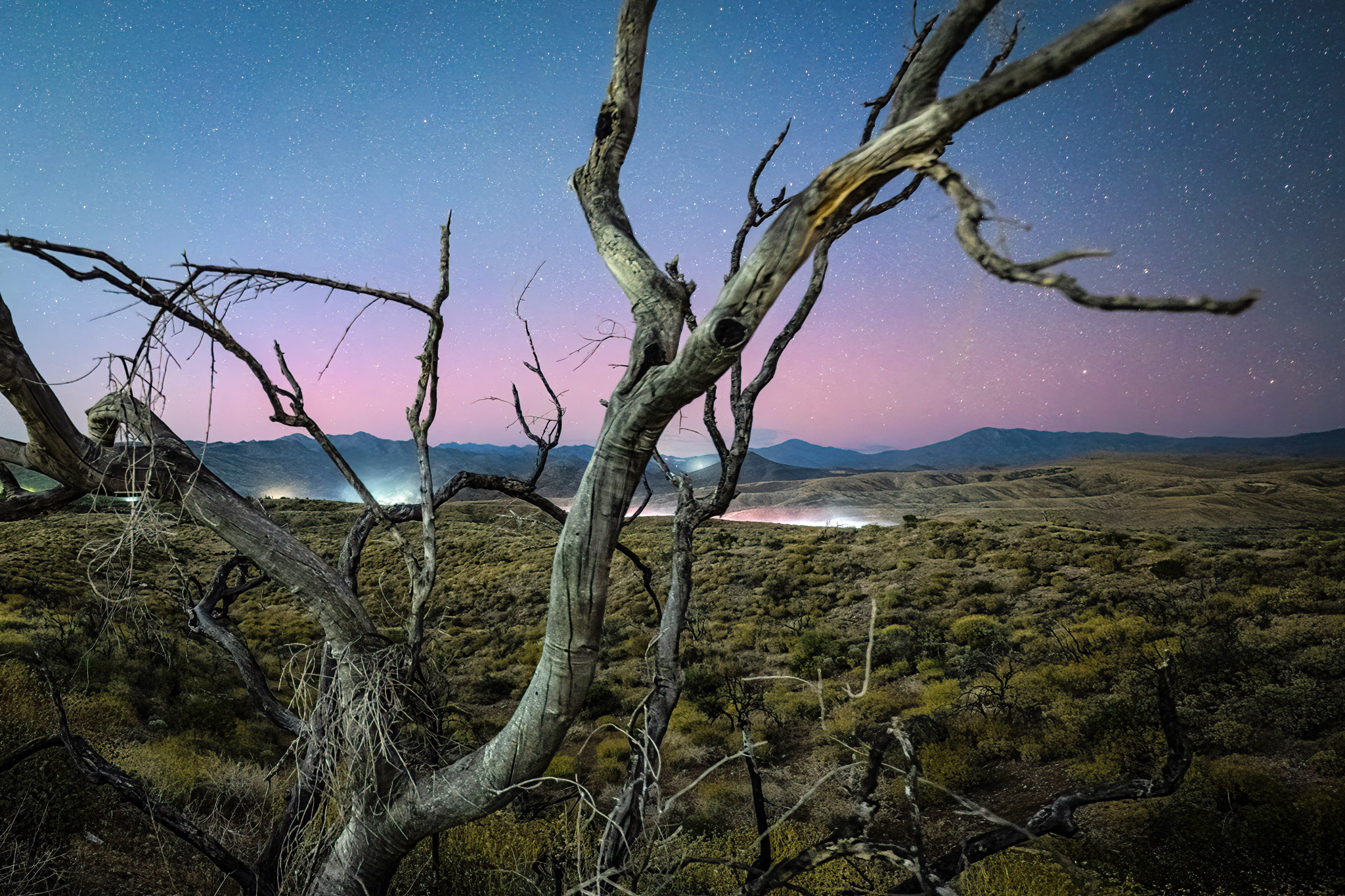Arizona nature photographer Greg Conn captured the Northern Lights shimmering over the Four Peaks Wilderness area on May 11, 2024, between 10 p.m. and midnight. This rare phenomenon, typically associated with polar regions, painted the Arizona sky with a sight rarely seen at this latitude.
Northern Lights in Arizona

The Northern Lights, known as aurora borealis, are an event that typically occurs in regions near the poles. They are caused by severe geomagnetic storms resulting from solar activity. Northern Lights in Arizona are a very rare and uncommon showcase. As we approach the solar maximum of 2024-2025, such sightings are expected to increase in frequency. The Southwest and Arizona’s Northern Lights offer a scenic contrast against the region’s iconic landscape.
Where and When to Witness Northern Lights in Arizona
To witness this celestial spectacle, scout for locations away from city lights and with minimal pollution. Arizona local photographer Greg Conn from Old Town Scottsdale Gallery Canyons has chosen the Four Peaks Wilderness area, as well as places like Flagstaff, Sedona, the Grand Canyon National Park, and other areas around the Tonto National Forest that offer prime viewpoints and conditions. The optimal window to catch the Northern Lights in Arizona is typically between 10 PM and 2 AM local time, facing the northern horizon for the best vantage.
Photography Tips
The Northern Lights are often faint to the naked eye, but through the lens of a camera, the vibrancy truly shines. I had an on-field chat with Greg about his experience in capturing this phenomenon, and here are some expert tips for capturing this event in all its glory:
- Sturdy Tripod and Long Exposure: Use a sturdy tripod to keep your camera still why employing a shutter speed of 15-30 seconds to capture the light’s movement.
- Remote Shutter Release: Minimize camera shake with a remote shutter release or self-timer.
- Shoot in RAW: Shoot in RAW to retain more details and colors for post-processing.
- Adjust ISO: Balance light sensitivity and noise levels by adjusting ISO settings between 800-3200.
- Wide-Angle Lens: Employ a wide-angle lens (16-35mm) to capture the vastness of the sky.
Future Auroral Sightings in Arizona
As mentioned earlier, during 2024-2025, we will approach a solar maximum period. This means that although auroral events in Arizona are sporadic, they might occur again. In this article featuring a direct experience thanks to Greg Conn Photography, we can offer you valuable insights on how to witness this cosmic encounter in the Grand Canyon State.
Conclusion

Personally, I think that the Arizona Northern Lights represent one the marvel of the natural world, it also adds intrigue by the match of a cosmic phenomenon witnessed in the horizon of the Southwest desert.
Keep chasing the light,
Sal
Photo courtesy of Greg Conn Photography

